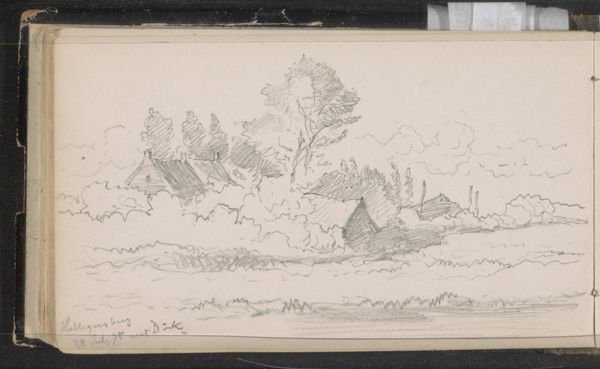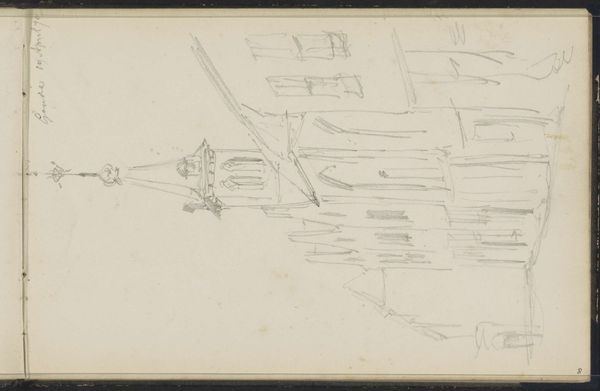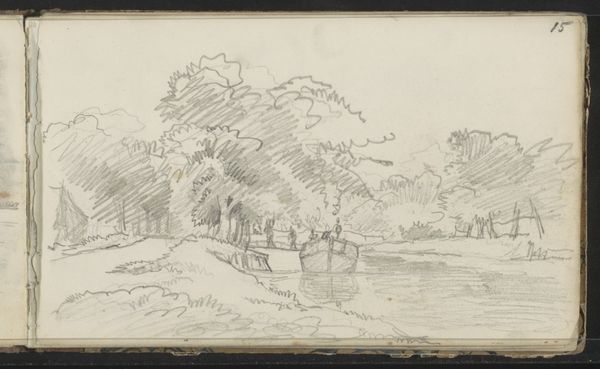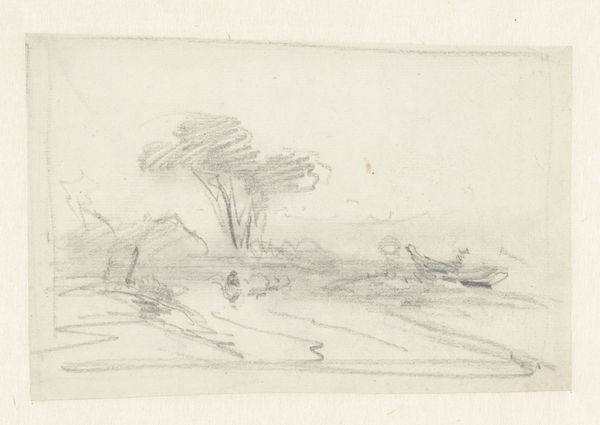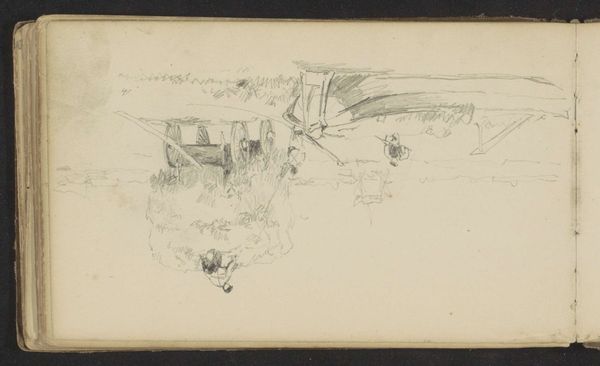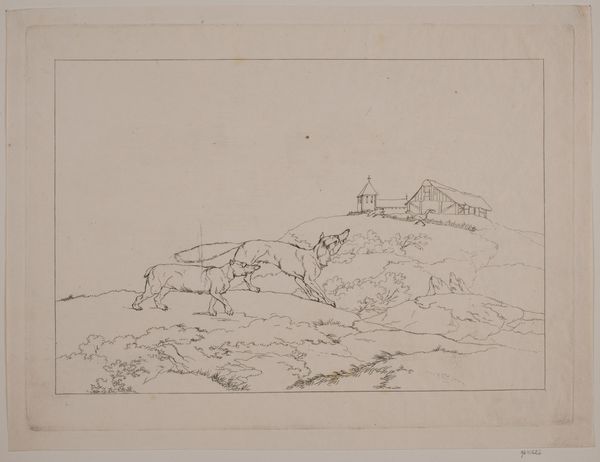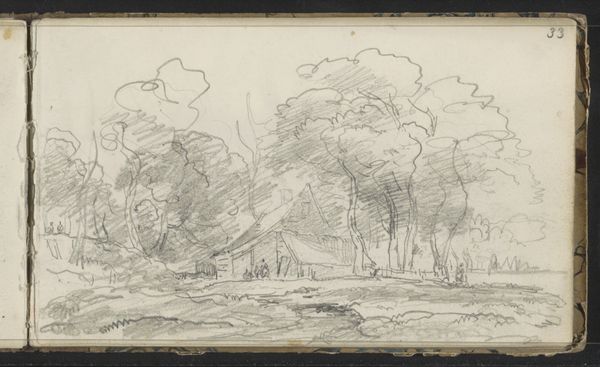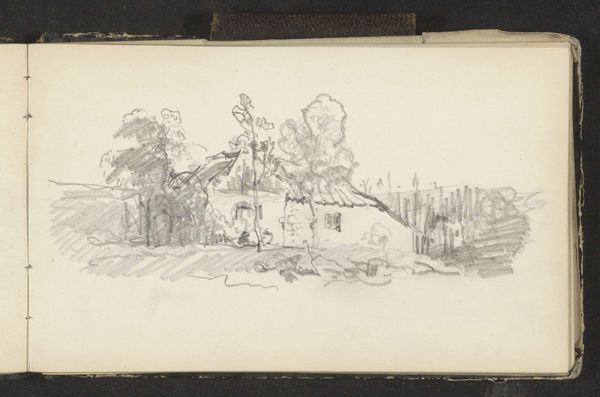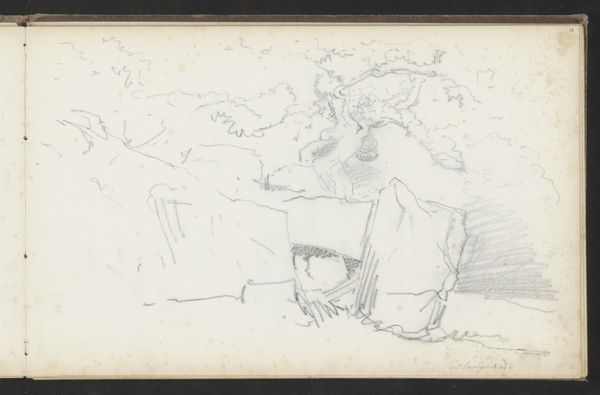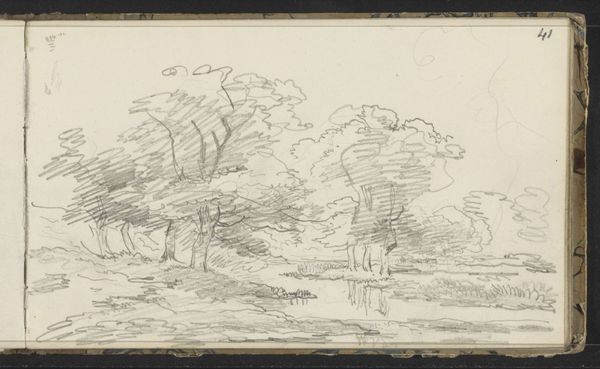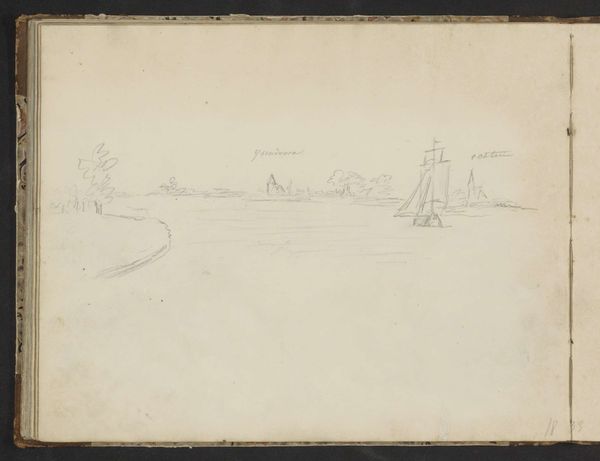
drawing, pencil
#
drawing
#
ink drawing
#
pen sketch
#
landscape
#
romanticism
#
pencil
#
sketchbook drawing
Copyright: Rijks Museum: Open Domain
Editor: Here we have Arnoldus Johannes Eymer's "Bridge Over Water Near a Village," a pencil and ink drawing likely created sometime between 1803 and 1818. It feels very immediate, a glimpse into a specific moment and place. What's most striking to you about it? Curator: What I see is the evidence of labor, both literally in the pencil strokes and conceptually in the way Eymer is engaging with the landscape. This isn't just a picturesque scene; it's about how the village exists materially in relation to the water, to transportation. What was Eymer thinking about, dragging a sketchbook into this environment? Who did he make it for? It looks like a simple pen sketch, but is so charged. Editor: That's interesting, I was initially focused on the composition, with the bridge acting as a sort of visual anchor. The texture of the lines is just captivating. So you're seeing the act of creating the image itself as a key element? Curator: Absolutely! Look at the pressure of the pencil, the hatching giving form to the trees, the bare minimum that stands in for a bridge, homes. We should focus on that artistic labor, the time, the skill required to communicate a specific perspective and evoke mood through fairly humble materials. What was his training? Where did the paper come from, who made it, distributed it? What pencils did he use? Editor: That makes me think about how widely available art supplies are today versus then, and how that affects who gets to make art and what kind. Curator: Precisely. Think about the social context: who had access to paper, pencils, and the time to create drawings like this? This piece allows us to ponder how artistic expression is embedded within material realities and social structures. It isn't divorced from making and distributing, and class. Editor: I hadn't considered all of those material implications, but now the drawing seems richer. The way you framed this work really sheds light on how intertwined artmaking is with its social context. Curator: And that close look allows us to start a whole new discussion about the making of things, even art.
Comments
No comments
Be the first to comment and join the conversation on the ultimate creative platform.
